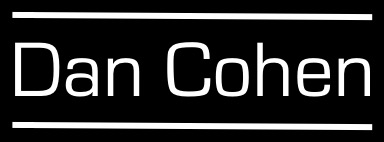I won’t get there until the summer, but I’m already looking forward to experiencing the Sol LeWitt retrospective at the always entertaining and often thought-provoking Massachusetts Museum of Contemporary Art, better known as MASS MoCA. (For previous thoughts provoked by MASS MoCA, see my post “The Artistic and the Digital.”)
For those who can’t make it to the retrospective—and really, you have no excuse, since its limited engagement runs through 2033—the museum has just put online a terrific website for the retrospective (one that exhibits many of the principles of good design, including the use of small multiples):
The site also has mesmerizing timelapse films showing how some of the giant works of wall art were created. This being LeWitt, the works were of course created not by him but by a team of (sixty-five) artists, including many students. LeWitt died last year, but his wall drawings were always made in this way. He “merely” created the plan for a wall drawing; others carried it out, and most of the works at MASS MoCA have been produced multiple times, on walls of different sizes and in different contexts.
Among LeWitt’s many innovations was this utter disdain toward a particular instance of a creative or intellectual work. The “artwork” was not what was on the wall (or the many walls a specific design had been placed on); it was in the ideas and feelings the artist had and the communication of these ideas and feelings to the viewer. The notion of a nicely framed work of art, a work of art that gained its value from its trappings or price or uniqueness, seemed hopelessly traditional, sentimental, and superficial. It missed the point of art.
My thoughts naturally turned to Sol LeWitt and the lessons we might learn from him as I mulled over the future of books and music this weekend. On an interesting listserv I’m subscribed to a debate raged about ebooks and the joys (the heft, the feel, the smell, the cover) of physical books; at the same time, the New York Times lionized Gabriel Roth, who is recreating classic soul and funk by eschewing digital technology and who speaks of the joys (the heft, the feel, the smell, the cover) of vinyl records.
My musical tastes happen to run toward classic soul and funk, but even I can’t help but feel that in Roth’s yearning for “real” vinyl and that rare 45 and book lovers’ similar idealization of hardcovers and that rare edition there isn’t something odd going on that LeWitt would have instantly recognized and scorned: the fetishization of the object rather than its underlying ideas, a nostalgia that improperly finds authenticity in packaging.
When Gabriel Roth tells Cliff Driver, a 75-year-old keyboardist, to replace his electronic Roland with an upright piano, Driver calls him “an old, traditional type” and the Times reporter notes that “Driver and his peers would just as well leave [such analog sound] in the past with their Afros and bell-bottoms.”
The soul of soul isn’t in the vinyl; it’s in the talent and creativity of its makers. The soul of books isn’t in their format; it’s in the ideas of their authors. Sol LeWitt understood that.



 This month’s
This month’s